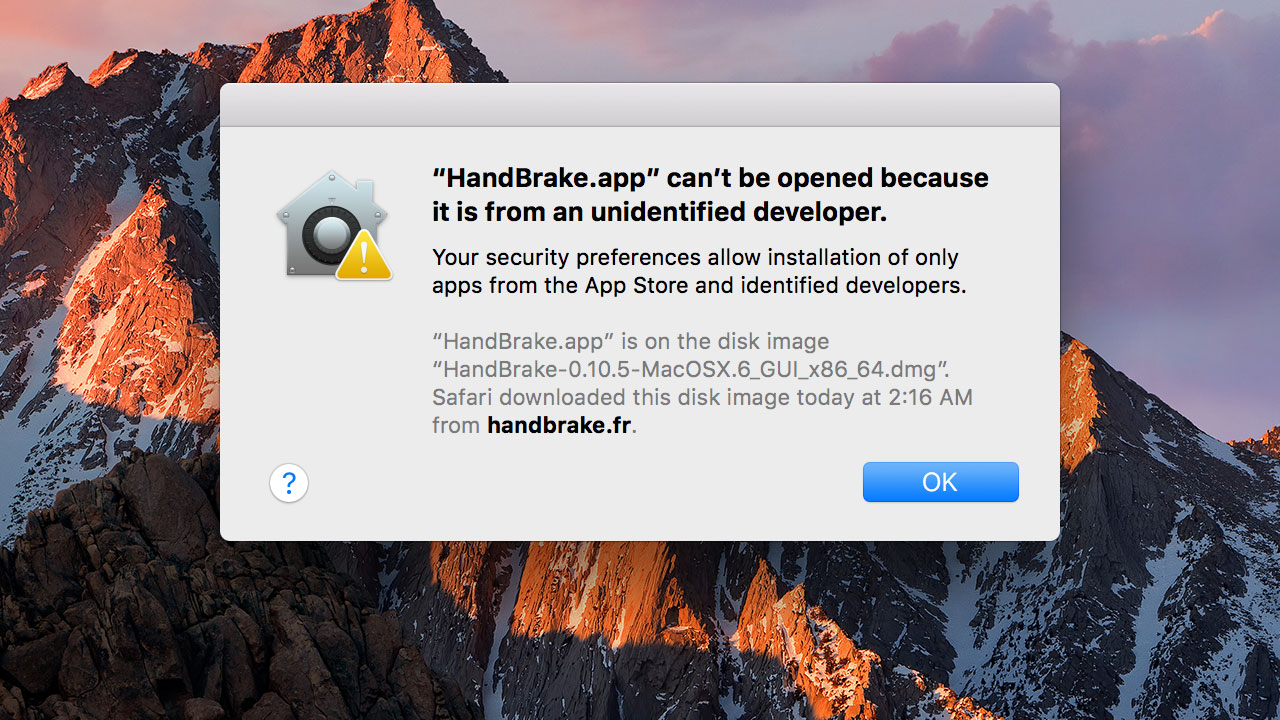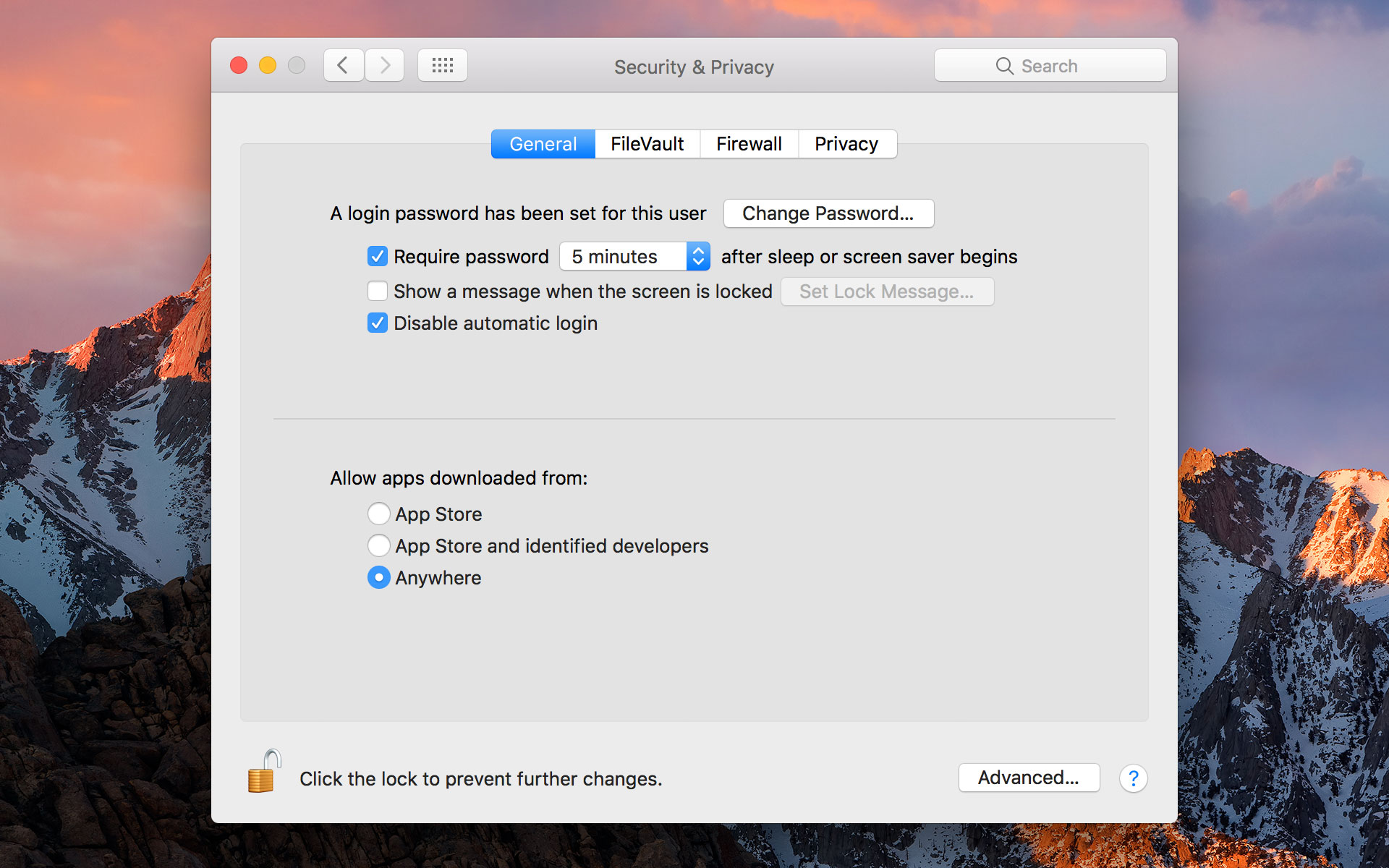Gatekeeper, first introduced in OS X Mountain Lion,
is a Mac security feature which prevents the user from launching
potentially harmful applications. In macOS Sierra, however, Apple made
some important changes to Gatekeeper that seemingly limit the choices of
power users. But don’t worry, Gatekeeper can still be disabled in
Sierra. Here’s how.
To resolute Gatekeeper issues on macOS Sierra and unlock images and
programs ( annoying image/application is damaged messages pretending you
cannot open things ).


Disable Gatekeeper in macOS Sierra
The Gatekeeper settings can be found in System Preferences > Security & Privacy > General. The Gatekeeper options are located beneath “All apps downloaded from:” with the choice of “Anywhere” missing.
Thankfully, the “Anywhere” setting can be restored to Gatekeeper in
Sierra with a Terminal command. First, quit System Preferences if it’s
open and then open a new Terminal window. Enter the following command,
followed by your admin password when prompted:
sudo spctl --master-disable
Now, relaunch System Preferences and head back to the Gatekeeper
settings. You’ll now see that “Anywhere” has been restored. Click the
padlock in the lower-left corner to enter your password and make
changes, then select “Anywhere” from the list of Gatekeeper options. The
security feature will no longer bug you about apps from unidentified
developers.
Special K for Sierra Utility
This is a utility to use Special [K] patchers on macOS Sierra.
This is in NO WAY associated or endorsed by the Special [K] group.
This is in NO WAY associated or endorsed by the Special [K] group.
The Xcode Command Line tools must be installed for patching.
If they are not installed, the utility will quit and you will be offered a chance to install them.
If they are not installed, the utility will quit and you will be offered a chance to install them.
Neither the patcher nor the app to be patched need to be placed in any special folder.
However, the app cannot be on a read-only disk.
However, the app cannot be on a read-only disk.
There are no error messages if the patching fails. In command line
mode, the Special [K] patcher does not provide any feedback.
Occasionally, successful patching does produce some output, but that has
been suppressed to prevent confusion.
The utility will first ask the user to select the patcher. The
utility will verify that it is a fairly recent Special [K] patcher. If
it isn’t, the user will be asked to select again.
After the patcher has been selected, the user will select the app to
be patched. There is no checking to see whether the corrct app was
chosen. And as said before, failure to patch will not be identified.
If you need to, please click to download.
Screenshots

Download Here :